7 Proven Ad Retargeting Strategies to Optimize Your Campaign Performance
In the online advertising segment, ad retargeting is an effective way that help you reconnect with potential customers who have shown interest in your brand. By targeting users who have shown interest but have yet to convert, businesses can significantly improve their conversion rates and return on investment (ROI).
However, to reap the benefits of retargeting, it’s essential to optimize your campaigns with the best practices. This blog will guide you through the seven best practices in ad retargeting for campaign optimization, ensuring you make the most out of your advertising campaigns.
What is Retargeting?
Retargeting is a form of online advertising that targets users who have previously visited your website or interacted with your content but did not complete a desired action, such as making a purchase or filling out a contact form.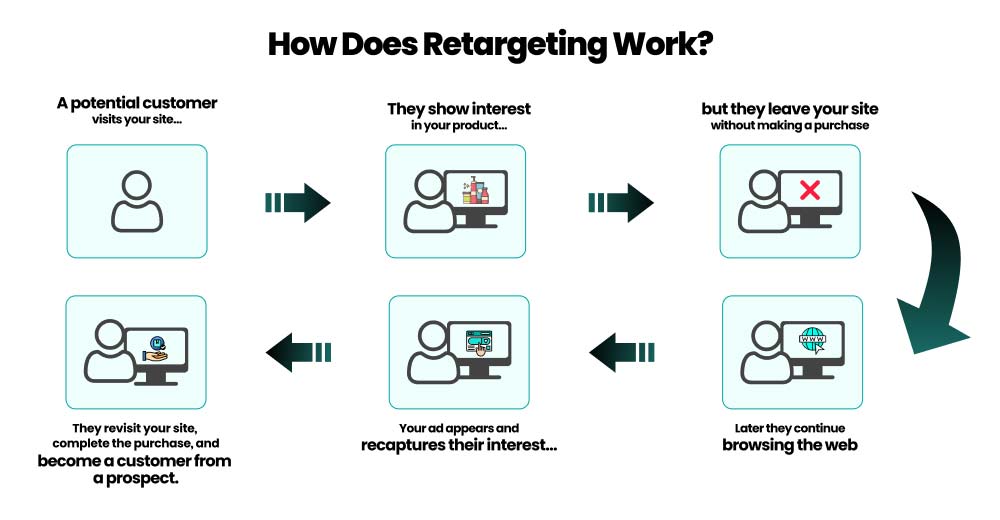
How Does Retargeting Work?
The process works by using cookies or pixels to track user behavior and display relevant ads to them as they browse other websites, social media platforms, or search engines.
When a user visits your site, a small piece of code (cookie) is placed on their browser. This cookie tracks the user as they browse the internet. This allows you to show targeted ads to them later.
The idea is to remind them of your brand and encourage them to return and complete the desired action.
7 Best Practices in Ad Retargeting for Campaign Optimization
Retargeting is a powerful tool that can help you re-engage interested customers and gently nudge them toward conversion. Here are the 7 Best Practices to keep in mind that can help you run a successful Ad retargeting campaign-
1. Segment Your Audience
Effective audience segmentation is important for successful Ad retargeting campaigns. By dividing your audience into specific groups based on various criteria, you can tailor your ads to meet the unique needs and interests of each segment.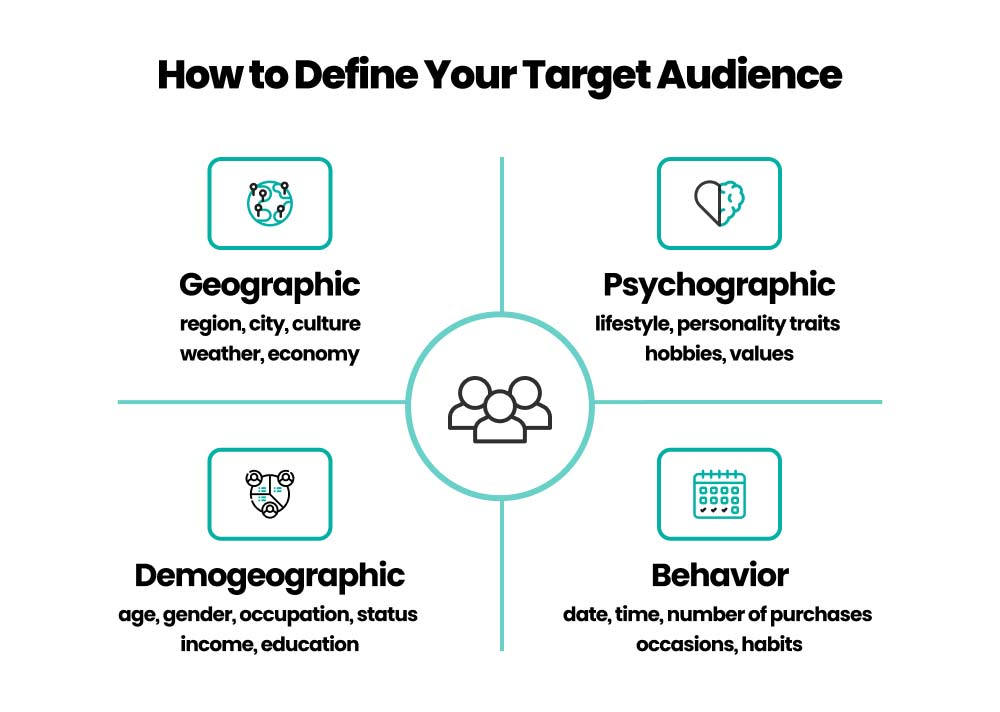
This personalization increases the likelihood of engagement and conversion. Here are the 4 ways you can segment them-
- Geographic Segmentation: Target users based on their location. This can be particularly useful for local businesses or campaigns with regional offers.
- Psychographic Segmentation: Segment users based on their interests, values, attitudes, and lifestyles. This helps create more personalized and relevant ads.
- Demographic Segmentation: Use criteria such as age, gender, income, and education level to target specific groups.
- Behavioral Segmentation: Analyze user behavior on your website, such as pages visited, time spent on the site, and past purchases, to create highly targeted ads.
Set SMART Goals
Clear goals provide direction and offer an effective way to measure the success of your ad retargeting campaigns. For instance, instead of a vague goal like “increase sales,” setting SMART goals will ensure that your objectives are attainable in a specific time frame.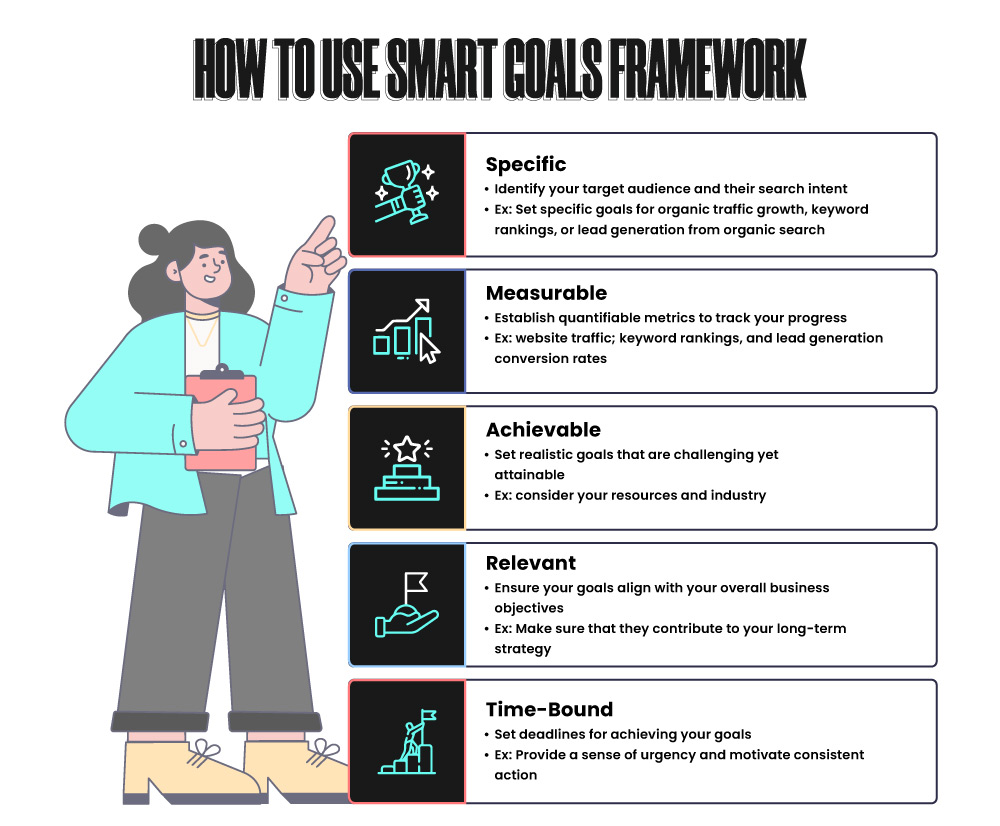
2. Use Frequency Capping
Frequency capping is a technique that limits the number of times a user sees your ad within a specific time frame. This is crucial to prevent ad fatigue, where users become annoyed or indifferent to your ads due to overexposure.
By setting a frequency cap, you can ensure that your ads remain effective and engaging.
Benefits of Frequency Capping:
Frequency capping helps maintain the effectiveness of your campaigns and prevents potential negative impacts on user perception. Here are four key benefits of using frequency capping in your ad retargeting efforts:
1. Maintains Positive Brand Perception
By capping the frequency, you prevent users from feeling overwhelmed or spammed by your ads. This helps maintain a positive perception of your brand, as users are less likely to associate your brand with intrusive or annoying advertising.
2. Optimizes Ad Effectiveness
Users appreciate brands that respect their browsing experience, making them more likely to respond positively to your ads when they do appear.
3. Helps Manage Your Advertising Budget More Effectively
Frequency capping allows you to allocate your advertising budget more efficiently by ensuring that your spend is distributed across a broader audience, rather than over-exposing a smaller group of users. This strategic allocation can lead to better overall campaign performance.
4. Improves Data Insights
By controlling exposure, you can better understand how different frequency levels impact engagement and conversions, allowing you to refine your ad retargeting strategy for even better results.
3. Personalize Your Ads
Personalization is key to making your retargeted ads more relevant and engaging. When users see ads that speak directly to their interests and behaviors, they are more likely to respond positively.
Benefits of Personalizing Your Ads
Personalized ads create a sense of familiarity and relevance, increasing the likelihood of converting retargeted users into customers. Here are the five key benefits of personalizing your ads in retargeting campaigns:
1. Increases Relevance and Engagement
Personalized ads are more likely to capture the attention of users because they directly address their interests and needs. This relevance boosts engagement rates, as users are more inclined to interact with content that resonates with them on a personal level.
2. Higher Click-Through Rates (CTR)
Personalization increases the likelihood that users will click on your ads because the content is directly relevant to their previous interactions.
Suggested Read: Improve Your Google Ads Click-Through Rate With These 17 Proven Tactics
3. Customer Satisfaction
Users appreciate when brands take the time to understand their preferences and deliver relevant content. This positive experience can increase their satisfaction with your brand and make them more likely to convert in the future.
4. Boosts Conversion Rates
Personalized retargeting ads are highly effective at driving conversions. By doing this, you increase the likelihood that they will return to your site and complete a desired action, such as making a purchase.
Recommended Read: 5 Effective Tips to Optimize Your Google Ads Campaigns for Better Conversions
5. Abandoned Cart Recovery
One of the most powerful applications of personalized ad retargeting is recovering abandoned carts. Ads that remind users of the items they left behind, perhaps with an added incentive like a discount, can prompt them to complete their purchase.
4. Utilize Dynamic Retargeting
Dynamic retargeting takes personalization a step further by automatically displaying ads that feature products or services users have shown interest in. This type of ad retargeting is particularly effective for e-commerce businesses.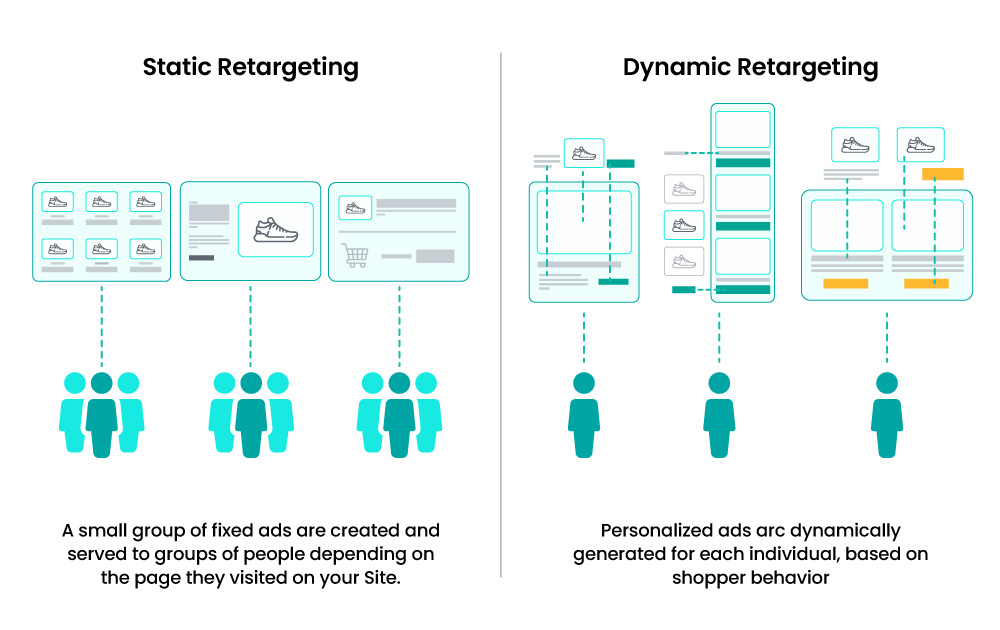
How It Works:
Dynamic ads pull data from your product catalog. They can showcase products left in a shopping cart, previously viewed items or related products.
Benefits of Dynamic Retargeting:
Dynamic retargeting is an effective strategy that ensures that the ads shown are highly relevant to each user, increasing the likelihood of engagement and conversion. Here are five key benefits of dynamic retargeting:
1. Personalized Product Recommendations and Customized Offers
If a user browsed specific products on your site but did not purchase them, dynamic retargeting can show those exact products in the ads.
Additionally, based on user behavior, you can create personalized offers or discounts for products they have viewed. This can be a compelling incentive for them to return and buy.
2. Cross-Selling and Upselling
Dynamic retargeting can also promote complementary products or upgrades based on the user’s browsing behavior. For example, if a user viewed a particular smartphone, the retargeting ad might suggest related accessories or a higher-end model, increasing the potential for additional sales.
3. Improves the User Experience
Dynamic retargeting improves the user experience by providing them with ads that reflect their interests and needs. Instead of generic ads, users see content that is directly relevant to their browsing history and preferences.
4. Seamless Continuity
When users see ads that reflect their recent activity, it creates a sense of continuity and relevance. This seamless experience makes users more likely to engage with the ad because it feels like a natural extension of their previous interactions with your brand.
5. Encourages Users to Complete Their Purchase
One of the primary goals of ad retargeting is to bring back users who have shown interest but have not yet converted. Dynamic retargeting is particularly effective at achieving this goal by reminding users of the products they are considering and encouraging them to complete their purchases.
5. Avoid Ad Fatigue
Ad fatigue occurs when users see the same ad too many times, leading to a decrease in engagement and a negative perception of your brand.
To learn more about ad fatigue, its signs and impact on ad retargeting, and how you can combat it, check out this infographic.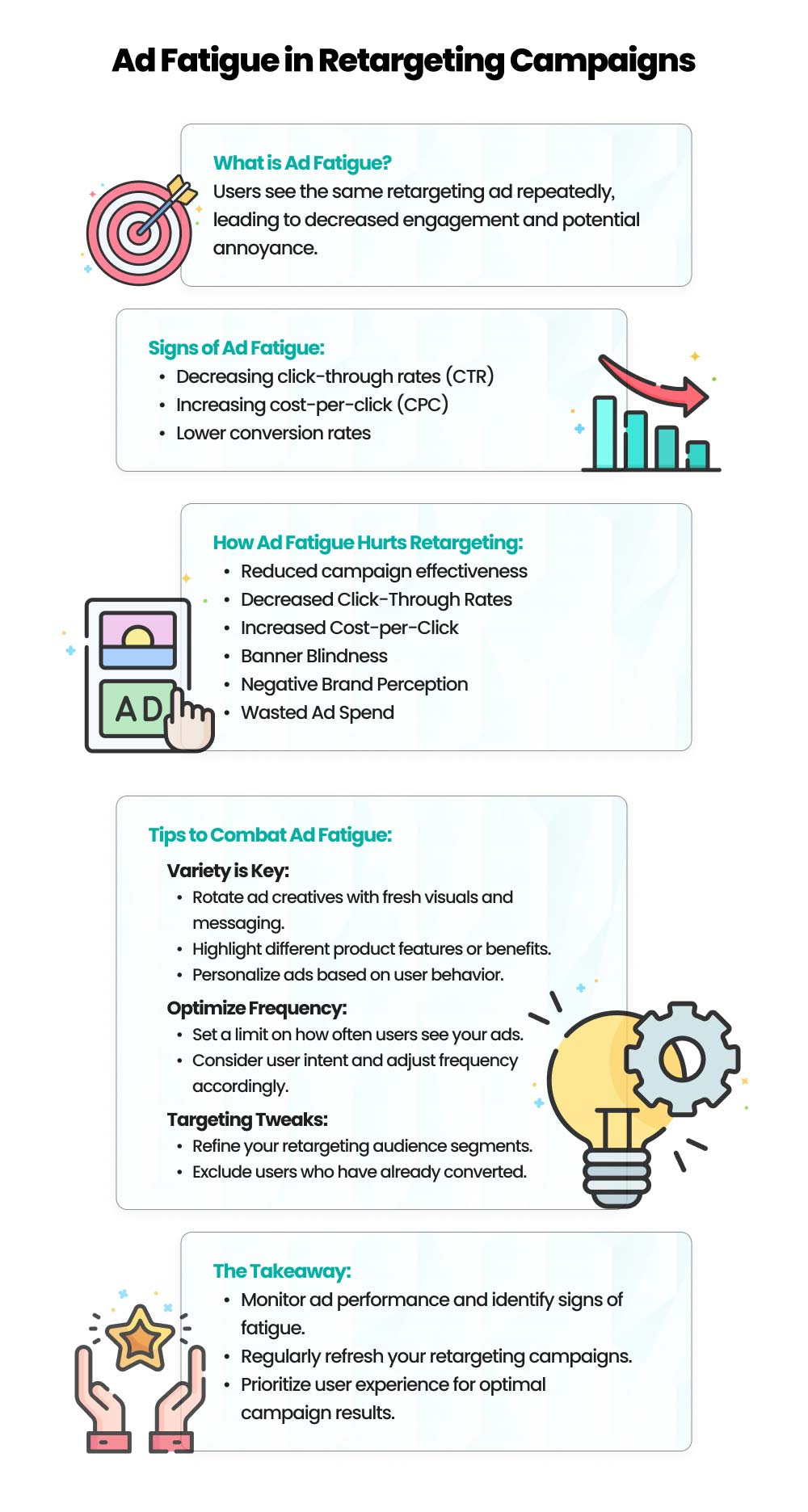
Suggested Read: What is Banner Blindness? And the 7 Clever Ways To Avoid It
6. Develop Quality and Engaging Creative
High-quality, engaging creatives are vital for capturing the attention of your audience and encouraging them to interact with your ads. Poorly designed ads can damage your brand’s reputation and reduce the effectiveness of your ad retargeting efforts.
Here are five points on how quality and engaging creatives can make your ad retargeting campaigns more impactful:
1. Captures Attention Quickly
A well-designed ad can stand out from the clutter, making users more likely to notice and engage with it.
2. Improves Brand Recall
Consistent use of brand colors, logos, and design elements across all creatives ensures that your brand is easily recognizable. Repeated exposure to these elements helps imprint your brand in the minds of potential customers.
3. Communicates Value Proposition Clearly
A strong visual paired with a compelling message can quickly convey the benefits and unique selling points. Infographics, icons, and other visual elements can help break down complex information into easily digestible and visually appealing formats. This clarity can help users understand the value of your offering at a glance.
4. Drives Higher Engagement
Interactive elements such as animated gifs, videos, and carousel ads can engage users more effectively than static images. This can prompt users to click on your ads, visit your website, and complete desired actions.
Suggested Read: What is Paid Media: Types, Benefits, Best Practices and Examples
5. Improves Conversion Rates
High-quality product images, customer testimonials in visual formats, and compelling calls-to-action (CTAs) can significantly influence users’ purchasing decisions. Visuals that evoke emotion or demonstrate product benefits can persuade users to convert.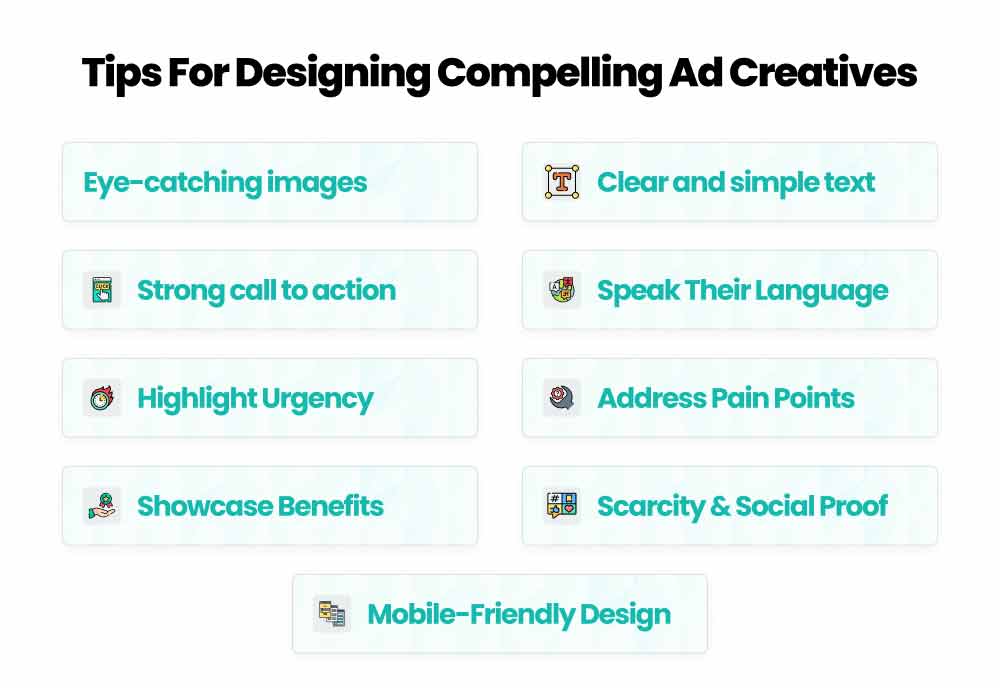
7. Optimize Ad Timing and Placement
The timing and placement of your ads can significantly impact their effectiveness. By optimizing these factors, you can increase the chances of reaching your audience at the right moment and in the right context.
Here are some tips on how to achieve optimal ad timing and placement for successful ad retargeting:
Timing: reaching users when they are most receptive
- Use analytics tools to understand when your target audience is most active. Look at the times and days when users visit your site, interact with your content, and make purchases.
- If your audience is spread across different time zones, schedule your ads to appear at optimal times for each region.
- Break down the day into different segments (e.g., morning, afternoon, evening) and allocate your ad budget based on when users are most likely to convert.
Placement: Choosing the best locations for your Ads
- Above the Fold: Place ads in prominent positions that are visible without scrolling. Ads above the fold tend to get more views and higher engagement rates.
- In-Content Ads: Position ads within the content of the page, such as between paragraphs of an article. These ads can capture users’ attention as they read and are often perceived as less intrusive.
- Sidebar and Footer Ads: While these positions might receive less attention than above-the-fold placements, they can still be effective, especially for users who spend more time on the page.
- Contextual Targeting: Place your ads on websites or within content that is contextually relevant to your products or services. For example, if you sell sports equipment, placing ads on fitness and health websites can be highly effective.
Bonus Tip: Optimize Your Landing Page for Successful ad retargeting
Your retargeting efforts will only be as effective as the landing pages they lead to. A well-optimized landing page can make the difference between a user bouncing off your site or completing a desired action.
Suggested Read: How to Optimize Your PPC Landing Pages for SEO
Why It’s Important to Optimize Your Landing Page
First Impressions: Your landing page is often the first interaction a user has with your site after clicking an ad. A well-designed and user-friendly page creates a positive first impression.
Relevance: If users don’t find what they expect, they are likely to leave.
Simplicity: A cluttered or confusing landing page can overwhelm users and reduce conversions.
Load Time: Slow-loading pages frustrate users and lead to higher bounce rates.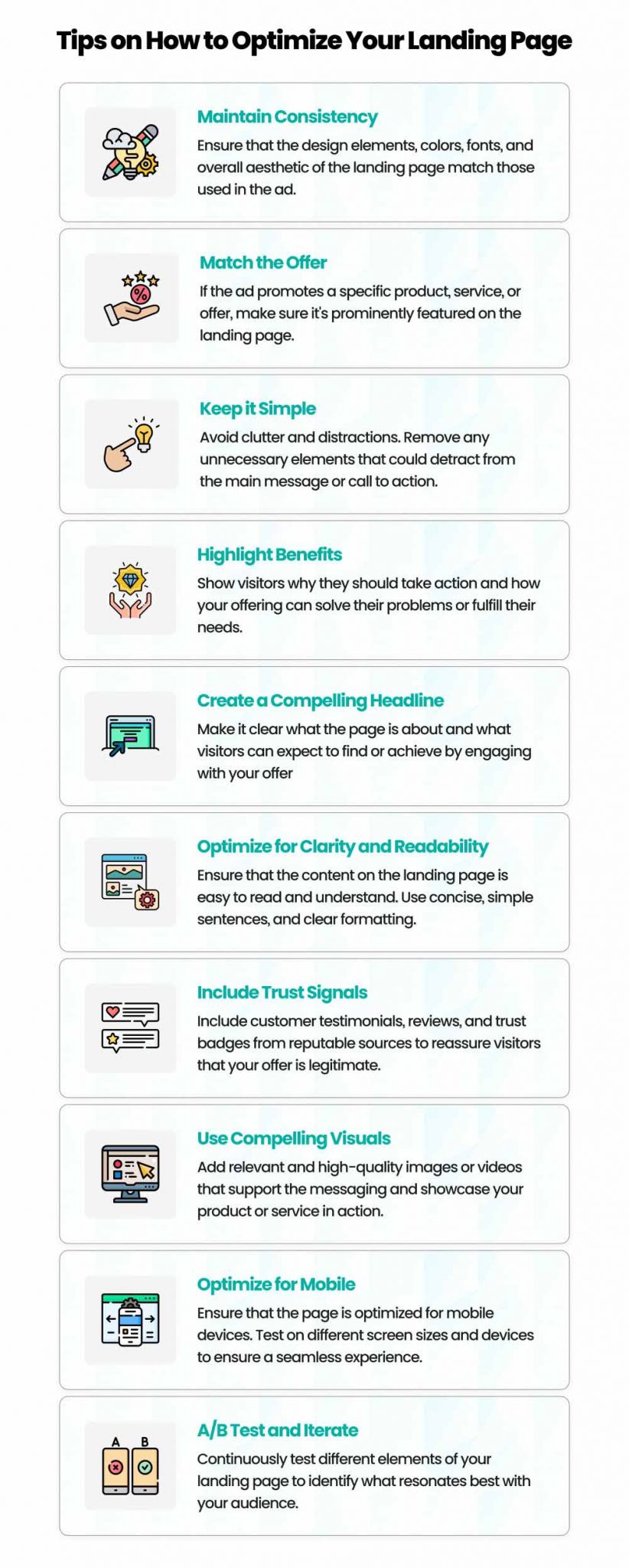
Conclusion
Retargeting is a powerful tool for digital marketers, as it gives you a second chance to convert potential customers who have already shown interest in your brand. According to Data Bridge Market Report, the retargeting software market is projected to hit $8.87 billion in 2029.
Therefore, to leverage its benefits, make sure to follow these best practices and make your ad retargeting campaigns more effective.
Whether it’s segmenting your audience, personalizing ads, using dynamic retargeting, or optimizing ad timing, each strategy helps drive engagement and conversions.
The key to successful ad retargeting is continuous optimization. Regularly review your campaign performance, test different methods, and fine-tune your strategies to stay ahead in the competitive market.
With a smart and strategic approach, retargeting can be a cornerstone of your digital marketing efforts, helping you achieve your business goals and maximize your return on investment.
Suggested Read: How to Create a Successful PPC Campaign Strategy to Captivate Your Audience
